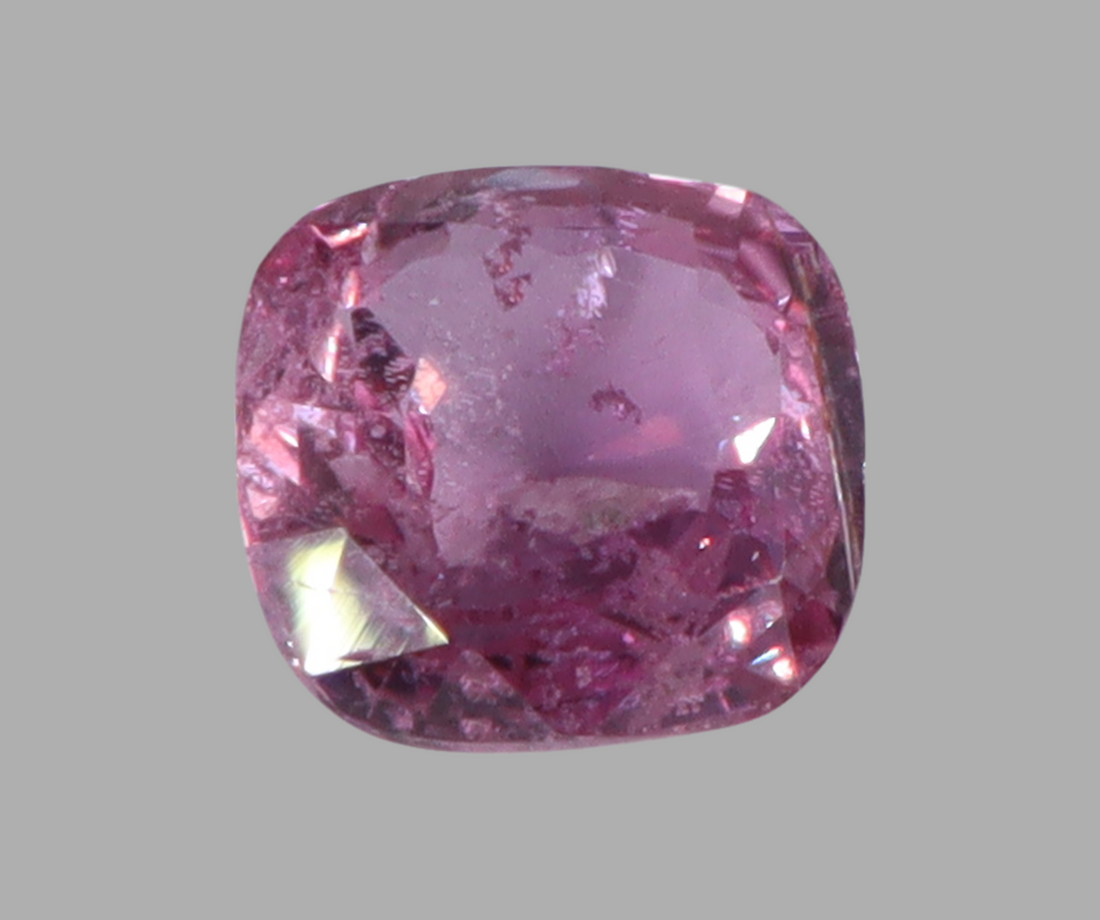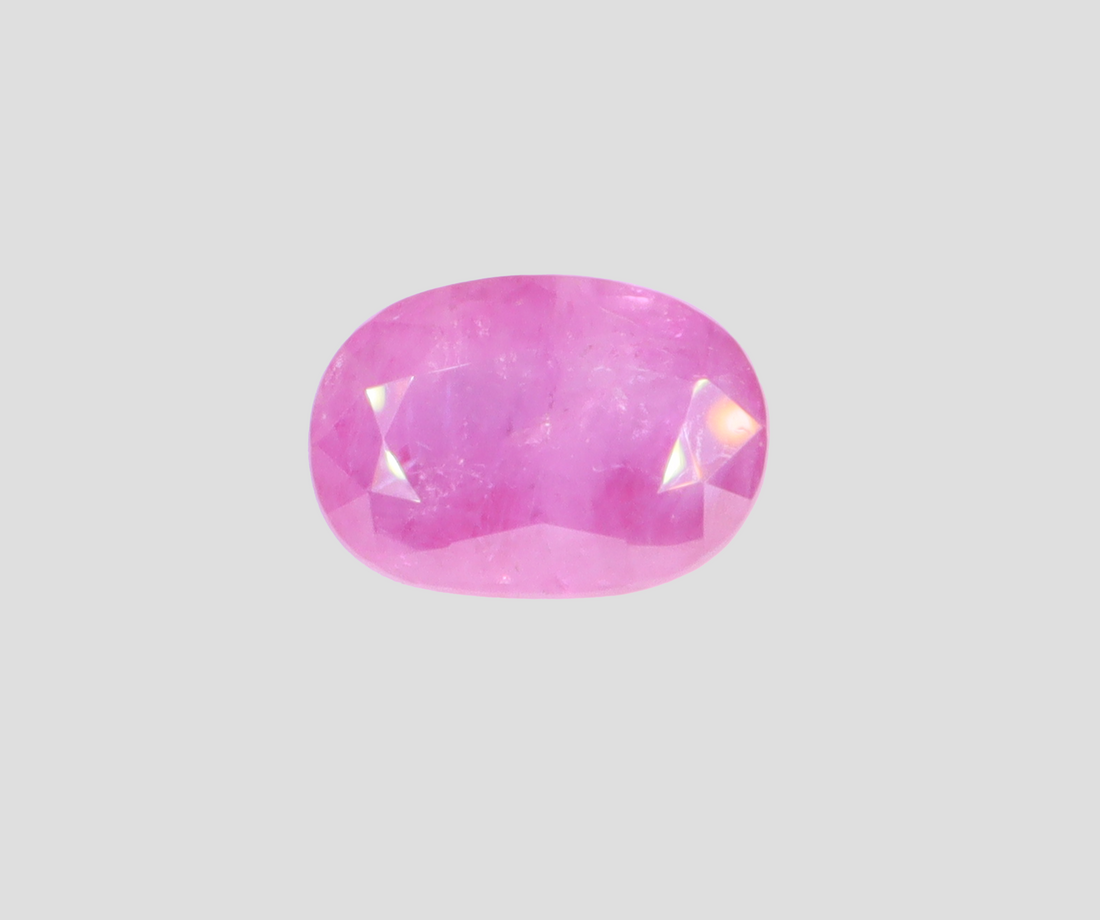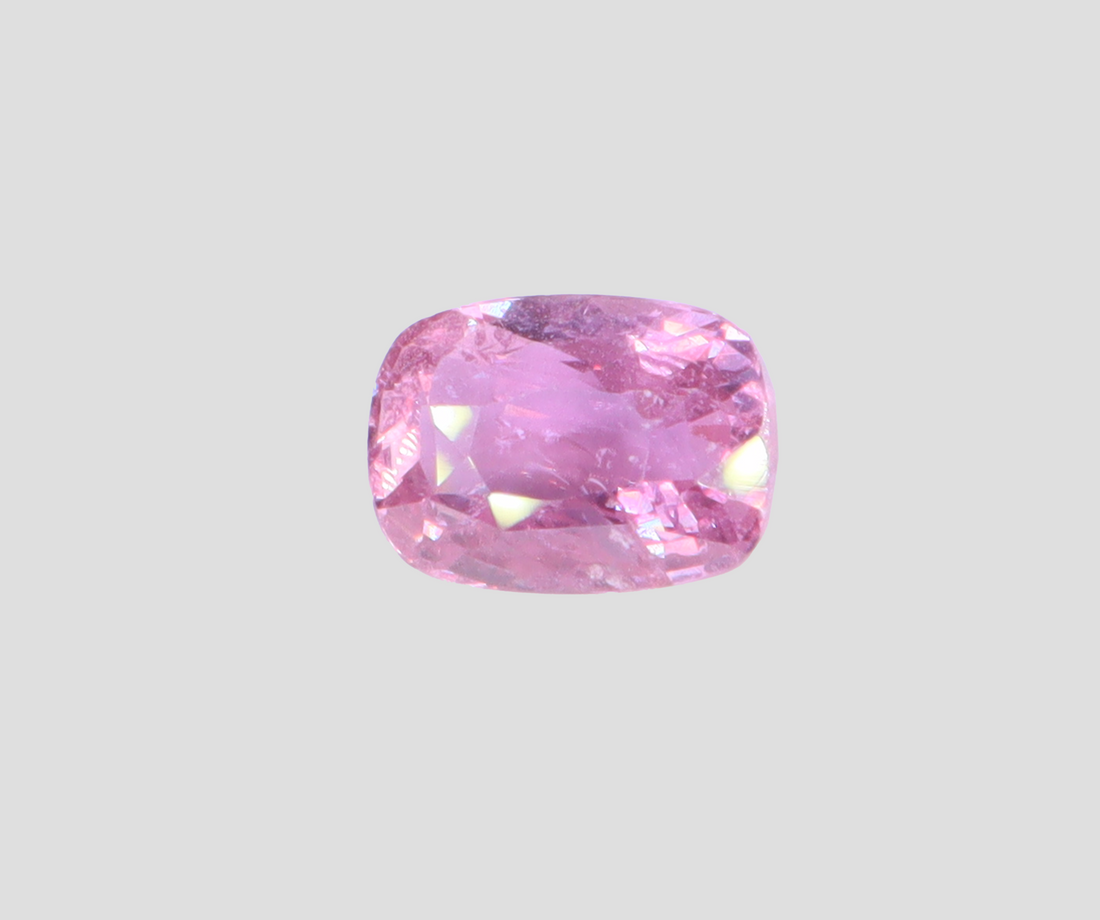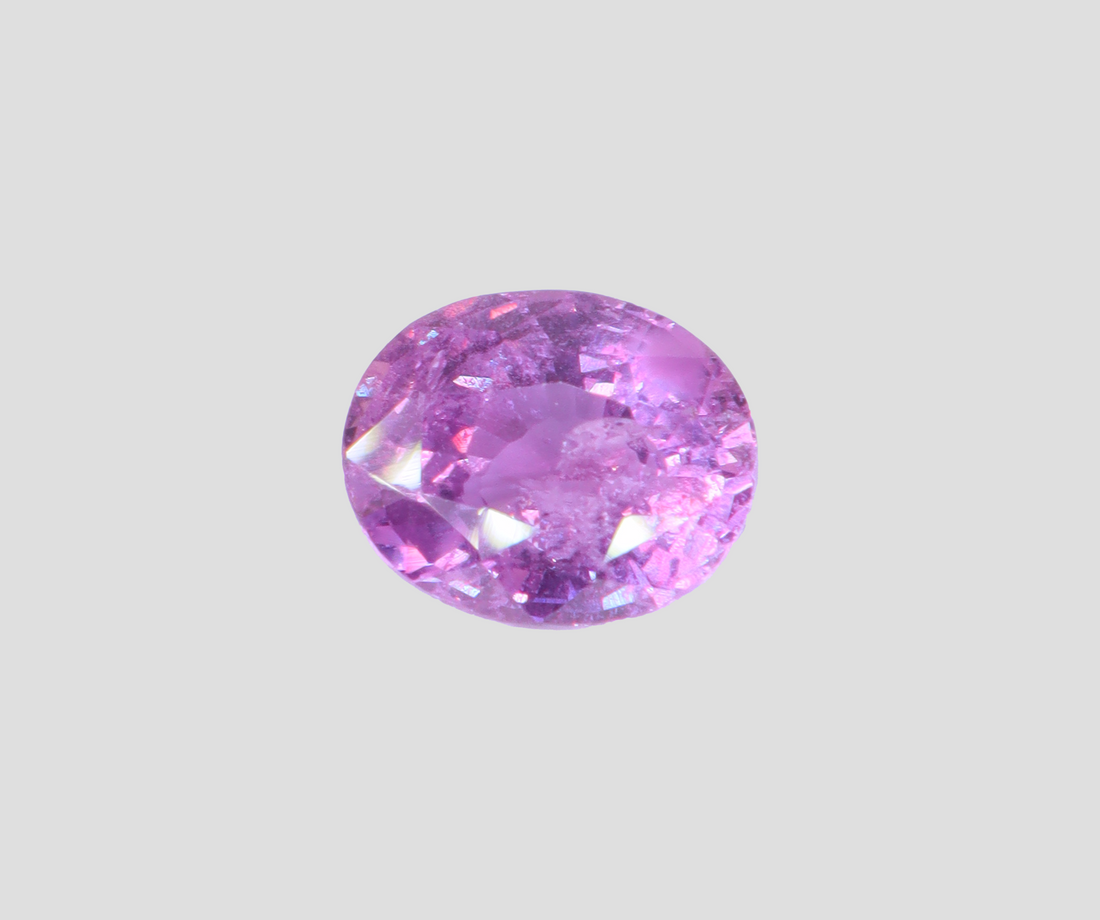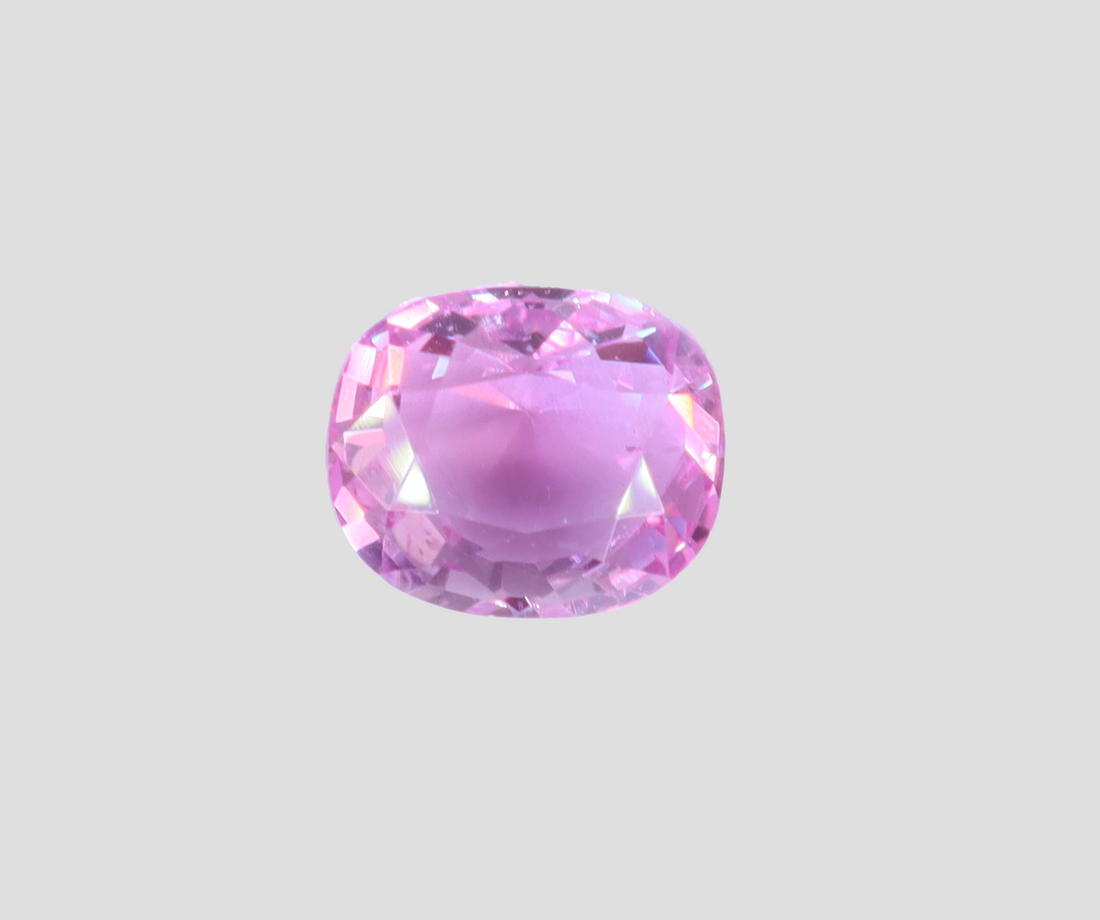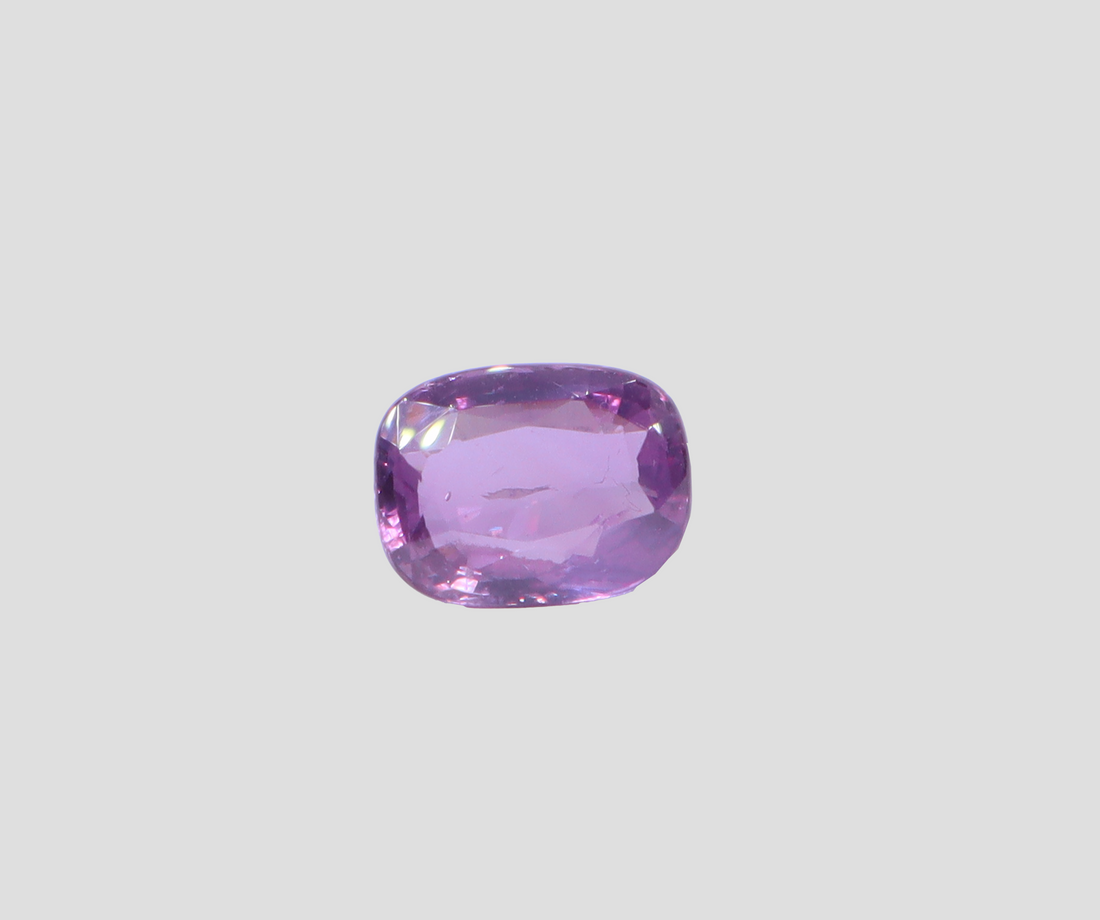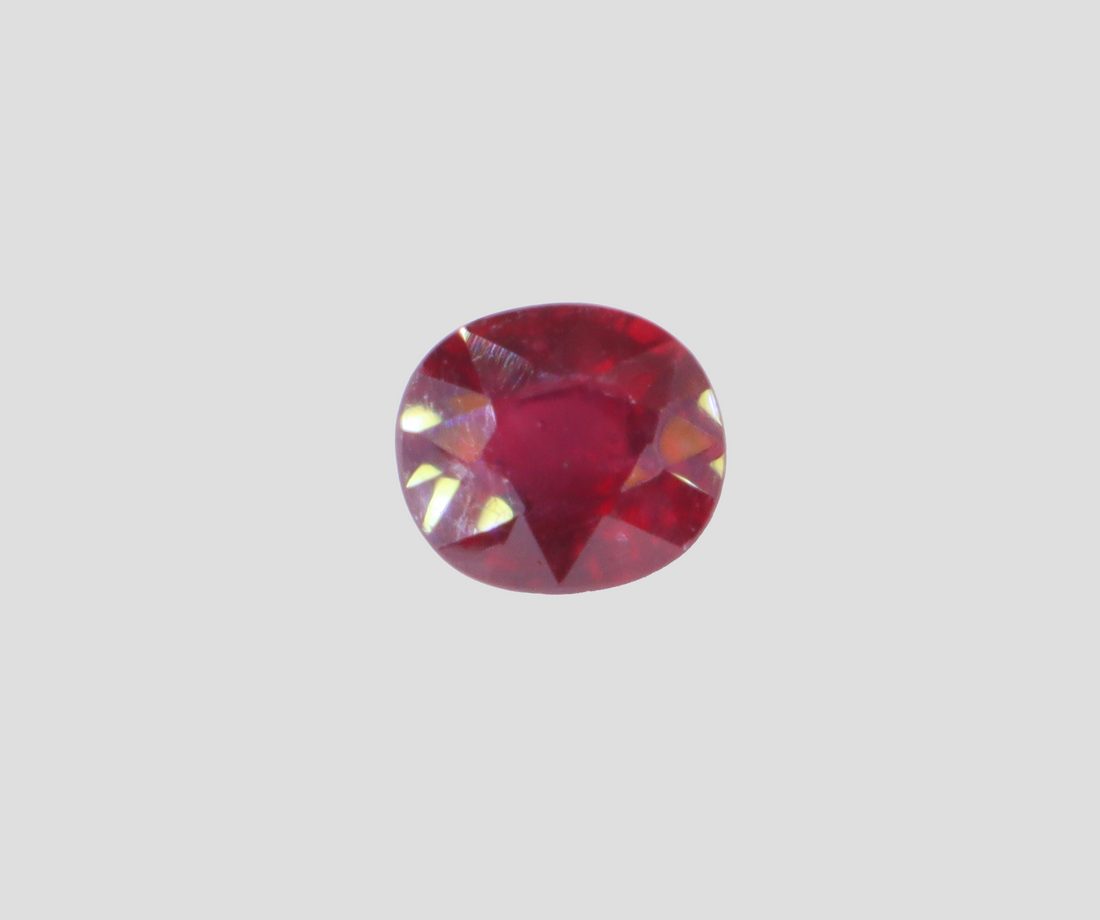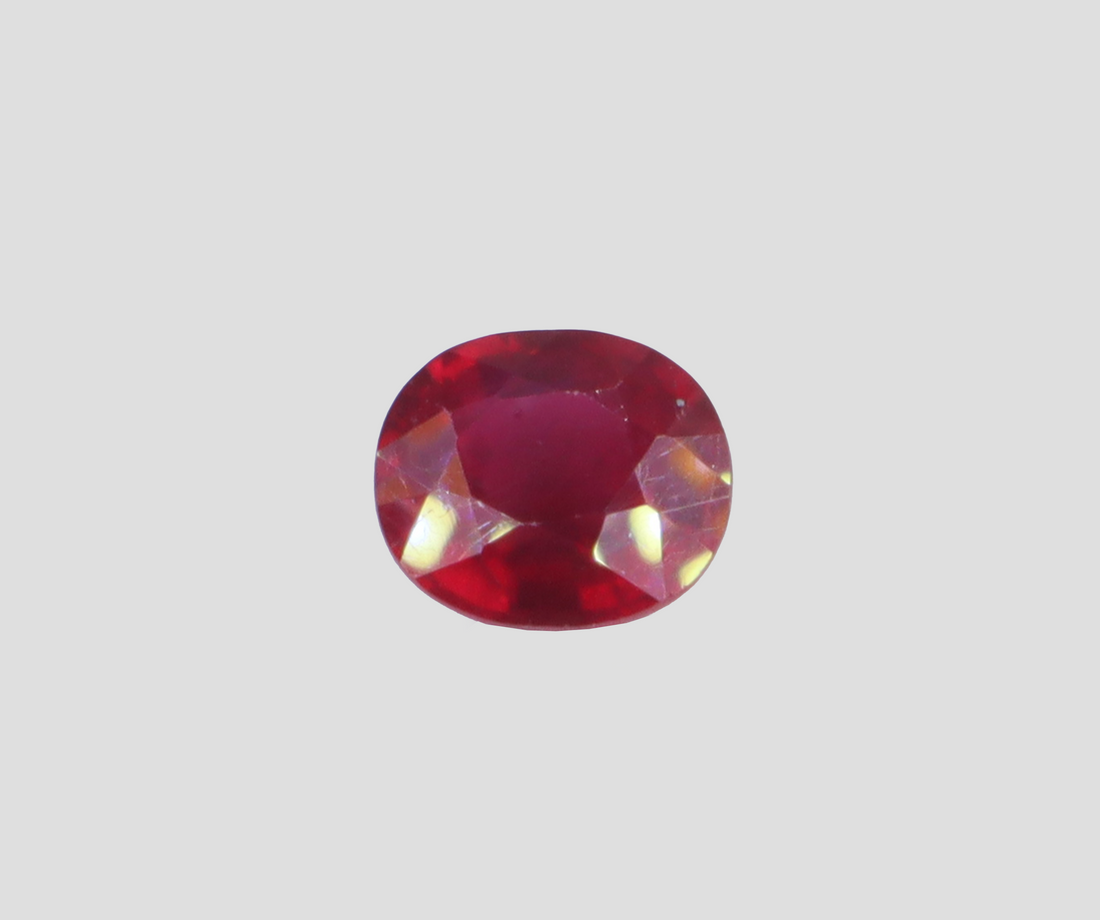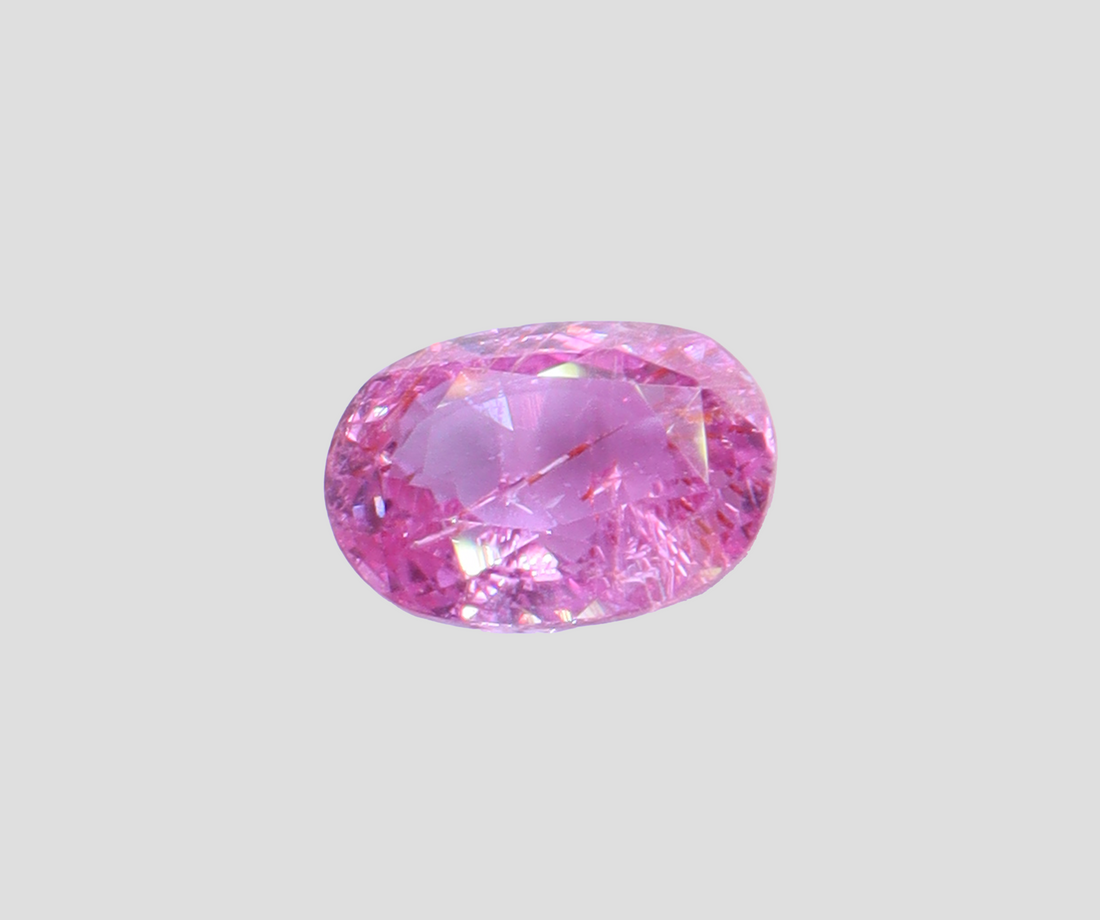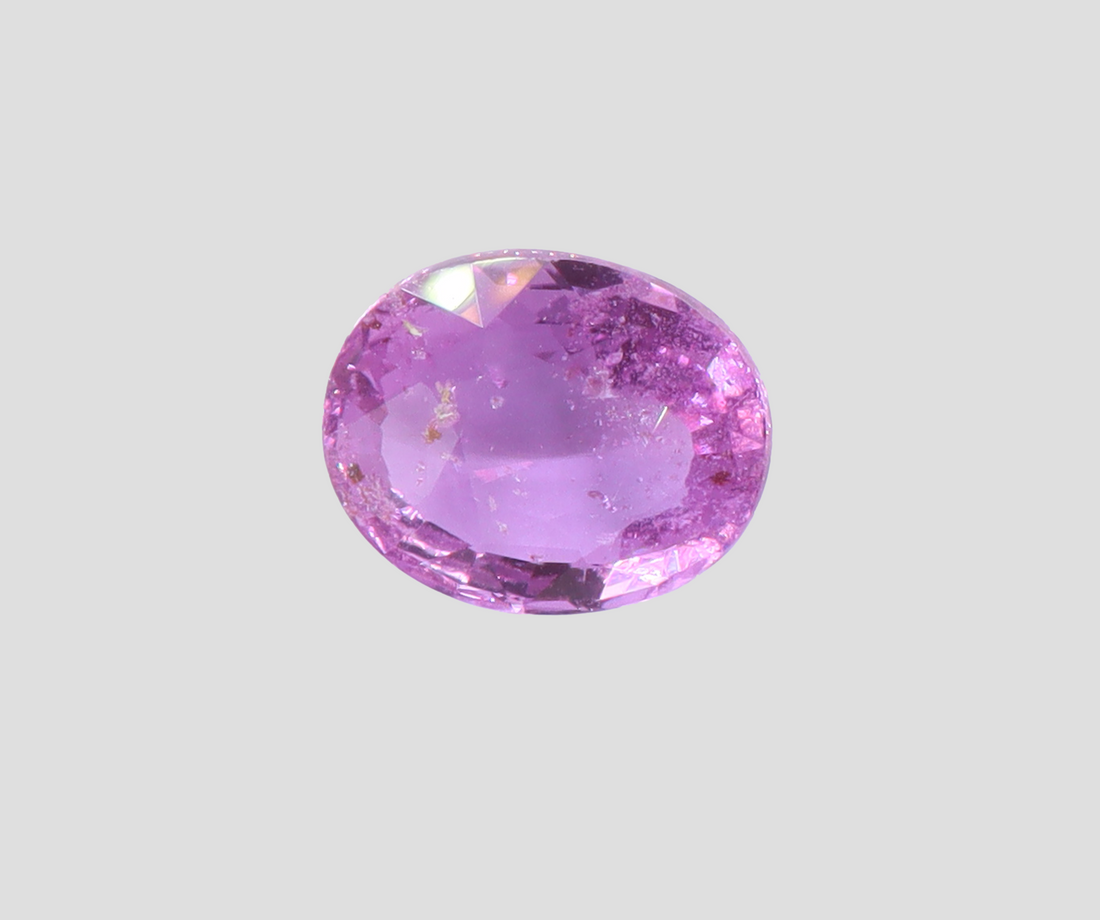This article serves as part of an ongoing series of profiles on the different varieties of precious & semi-precious gemstones. To view the entire list, click here.
The ‘King’ of gemstones, rubies - also known as Manik, have captivated jewellery connoisseurs for centuries with their stunning fiery red hues. Rubies, in general, are regarded among the most popular and the most premium gemstones for enthusiasts, jewellery connoisseurs, and consumers alike. These gemstones are the red variety of the Corundum minerals, and are relatively rarer than their blue and yellow counterparts.
To give you a sense of the value premium commanded by rubies, a Burmese Pigeon’s Blood (highest colour grading for rubies) ruby weighing 25.59 carats, was sold for $30 million at a Soethby’s auction in 2015. This ruby stone, dubbed the “Sunrise Ruby” was, at the time, among the rarest such specimens to ever exist. More recently, a mining conglomerate Fura Gems, mined an excessively rare, 55-carat red ruby from its Mozambican mines. This ruby, named “Estrela de Fura” is the largest gem-quality specimen, and broke records at a Sotheby’s auction this year – with a sales price of a whopping $34.8 million. These specimens, of course, are exceedingly rare, but they underline the general notion of rubies being opulent gemstones.
 The 55-carat, Estrela de Fura Ruby, set a world record - fetching $34.8 million at an auction in June, 2023 (Source: Sotheby’s)
The 55-carat, Estrela de Fura Ruby, set a world record - fetching $34.8 million at an auction in June, 2023 (Source: Sotheby’s)
In this gemstone profile, we outline the fascinating world of rubies or manik - delving into their formation, origins, inclusions, common treatments, quality factors and much more, unravelling the mysteries that make rubies worthy of being the Kings of Gemstones.
1. Rubies - Formation & Occurrence
Rubies are a truly magnificent class of gemstones within the corundum mineral family. Their alluring shades, ranging from a delicate pinkish-red to a deep, luscious blood-red, have captured the imagination of collectors and connoisseurs alike. Rubies are predominantly composed of aluminium oxide, and contain traces of chromium. The presence of chromium is what imbues rubies with their remarkable red colour, setting them apart from all other corundum varieties.
Rubies, like most other gemstones, are formed as a result of intense geological processes that occur deep within the earth's crust over millions of years. They originate from metamorphic rocks, where aluminium-rich minerals crystallize under heat and pressure to give rise to corundum crystals with a specific elemental makeup, which eventually turn into rubies. Most gem-quality rubies form in metamorphic rocks like gneiss or schist, as well as in igneous rocks like basalt. The finest ruby stones typically originate in marble, a metamorphic rock created from limestone under intense heat and pressure. Marble produces rubies with intense red hues, while basalt yields darker and less vibrant red rubies due to its higher iron content.
Rubies can be found in various locations around the world, with Myanmar (formerly Burma) and Mozambique being the two primary sources. The Mogok Valley in Myanmar stands out for its renowned production of exquisite rubies, while other notable locations include Sri Lanka, Madagascar, Afghanistan, Kenya, and Thailand.
2. Where Are Rubies Found?
While rubies can be found in various regions worldwide, the following countries are renowned for their exceptional rubies with distinctive characteristics:
- Myanmar (Burma): Myanmar has been historically celebrated as the world's leading producer of rubies. Burmese ruby stones are renowned for their deep and intense red colours often referred to as "pigeon's blood" red. These rubies are the rarest and most highly sought after for their intense saturation and exceptional clarity. Burmese rubies, especially those from the Mogok Valley, are by far, the most expensive variety of rubies.
- Mozambique: In recent years, Mozambique has emerged as a significant source of fine rubies. Mozambican rubies showcase a captivating range of colours, ranging from purplish red to deep red, occasionally accompanied by a subtle orange hue.
- Thailand: Thailand's Chanthaburi mines are known for producing rubies with high iron content and no fluorescence. Thai rubies have a unique allure due to their brownish-red colour, setting them apart from the purplish undertones typically seen in Myanmar rubies. Rubies from Thailand are often lead glass-filled, which undermines the structural integrity of the stone. Although the use of led-glass filling in rubies can make them look very scintillating, this treatment diminishes the value of the stones and is widely considered to produce a largely inferior gemstone.
- Madagascar: Madagascar in Africa is known for its diverse range of rubies, displaying colours that range from vibrant red to red-orange, although most specimens from this region have an intense pink colour. While these rubies stones typically have good clarity, it is not uncommon for them to exhibit colour irregularities that can be addressed through thermal enhancements.
It's worth mentioning that besides the locations mentioned above, rubies can also be found in other countries like Kenya, Sri Lanka, Afghanistan, Vietnam, Iceland, and more. Their qualities and characteristics vary largely – depending on the mine of origin.
3. Are All Rubies, Indeed Red?
While rubies are renowned for their red colour, not all ruby stones are exclusively red. The presence of chromium is primarily responsible for the striking red hue in most rubies, along with specific geological conditions during their formation. However, the composition of chromium in each stone is unique, resulting in variations in the intensity and shade of red in rubies.
Ruby stones can exhibit a spectrum of red hues, ranging from a light pink tone to a deep blood-red. The most prized and sought-after rubies are those with a vibrant, intense-red colour, often referred to as "pigeon's blood" red in the trade. This Pigeon’s Blood classification of a ruby colour is considered the epitome of ruby reds. In general, however, it is not uncommon for a ruby to display secondary hues, such as purplish, orangish, or brownish undertones. These colour variations add depth and character to each ruby, making each piece unique.
 Rubies can occur in a colour span of light pink to a deep and vivid red.
Rubies can occur in a colour span of light pink to a deep and vivid red.
It’s worth noting that there are instances where the red colour of corundum (Ruby) may showcase a slight pinkish tone, leading to its classification as a pink sapphire instead of a ruby stone. Despite this distinction, both gems share the same mineral composition of corundum, with the classification primarily determined by the perceived colour.
4. Common Inclusions in a Ruby
Ruby stones, like other gemstones, often contain inclusions that are mineral crystals or fluid and gas-filled cavities. These inclusions are formed during the crystal growth process and contribute to the uniqueness and identification of each ruby. By analysing these inclusions, gemmologists can gain valuable insights into the formation process and geographical history of the gemstone, as certain localities can have distinct and specific types of inclusions.
Like most sapphires, a ruby often contains ‘silk’ inclusions. These are fine needle-like structures which resemble silk fibres, and they can influence the way light interacts with these gemstones, resulting in unique reflections. Among rubies, those from Myanmar (formerly Burma) are particularly known for their silk effects.
 Silk inclusions within a Ruby (Source: GIA)
Silk inclusions within a Ruby (Source: GIA)
Fingerprints are also a common occurrence, which are natural fractures that have occurred and healed within the stone over time. Despite their presence, these fingerprints are typically small and have minimal impact on the overall quality of the ruby. Afghan rubies, for example, can be recognized by their fine rutile needles and fluid-filled fingerprints. Another common inclusion found in rubies are needles, which are elongated and slender crystal formations that resemble tiny needles or hollow tubes within the gemstone.
While flawless gemstones are considered more valuable, inclusions sometimes not only enhance the beauty of certain stones, but also provide valuable insights into their natural formation. The study of these inclusions can reveal the story behind a gemstone’s formation and its characteristics.
5. Common Treatments & Enhancements of Rubies
Rubies, like many gemstones, can undergo various treatments and enhancements to improve their appearance. One widely accepted treatment is thermal enhancement (or heat treatment), where rubies are subjected to high temperatures to enhance their colour and clarity. This process can remove or minimize inclusions, improve colour saturation, and enhance overall transparency. In general, this is an accepted industry practice and does not affect the structural integrity of the gemstone.
Another common treatment in rubies, particularly those from Thailand, is glass-filling. In this process, fractures within rubies are filled with a substance, commonly lead glass, to improve their clarity and appearance. It alters the gem's structure and long-term stability, somewhat rendering the ruby a lot inferior to its natural counterparts.
| Mineral | Corundum |
|---|---|
| Colour Span | Light pink to a deep blood-red. May also exhibit undertones of orange, pink, brown and violet. |
| Popular Origins | Burma (Myanmar), Mozambique, Madagascar, Sri Lanka & Thailand |
| Mohs Hardness | 9.0 (on a scale of 10) |
| Common Treatments | Thermal Enhancements; Lead-glass filling (Thai rubies) |
| Birthstone | July |
Rubies - A Quick Snapshot
6. Evaluating the Quality of a Ruby
When assessing the quality of a ruby, some general considerations are:
- Origin: Rubies from Myanmar (formerly Burma) hold the highest esteem in the world, with their pigeon blood rubies fetching the highest prices in the market. African rubies from Mozambique and Madagascar follow closely behind in popularity. Thailand is popular for glass-filled rubies, and other countries like Kenya and Vietnam also produce rubies, they are not held in the same high regard or value as the aforementioned sources.
- Colour: Ideal rubies exhibit a vibrant red hue, vivid colour saturation, and a medium tone. Gemmologists assess these factors by examining the stone's basic colour (hue), depth of colour (tone), and intensity from light to vivid (saturation). The interplay of these characteristics determines the overall appeal and value of rubies. The best colour for a ruby, which is a vivid, intense red that is uniformly saturated, is known as Pigeon’s Blood in the trade. Pigeon’s blood rubies, especially those from the Mogok Valley in Burma, are among the most coveted and premium rubies in the world.
- Clarity & Inclusions: While ruby stones often contain natural inclusions, excessive or noticeable flaws may impact their clarity. In general, rubies with minimal inclusions and a higher level of transparency are more valuable, but such specimens are often rare and command a large value premium.
- Carat weight: Like all gemstones, the value of a ruby stone increases exponentially with its size. A weight between 4 – 7 carats is considered standard, and specimens that weigh over 8 carats are considered to be large, and command a size value premium.
- Treatments: Untreated rubies are very rare, sought after and considered more valuable. However, it is widely recognized that thermal enhancement techniques are common and accepted in the industry. Glass-filled rubies, on the contrary, are considered to be much inferior and as such, are a lot cheaper.
To determine the overall quality of a ruby, it is important to work with a reputable jeweller or gemmologist who can assess the gemstone's characteristics and provide an expert opinion.
7. How Much Do Rubies Cost?
The price of a ruby can vary significantly based on the several factors outlined above. Fine rubies can command high prices, especially if they possess vibrant red colour, excellent clarity, and minimal inclusions. The carat weight also plays a role, with larger rubies generally being more valuable.
In general, glass-filled rubies are among the cheapest variety, ranging between $50 - $300 per carat. Mozambique and Madagascar rubies of a standard quality can start from as low as $300 per carat, and can move upwards of thousands of dollars, per carat. Burmese rubies are the most expensive in the world, with lower-quality specimens starting at $500 per carat, and no upper limit.
8. Rubies in Astrology
Ruby stones hold great astrological significance as they are associated with the Sun, which is among the most important celestial bodies. Rubies are also linked to the zodiac sign of Leo and are considered the birthstone for the month of July. In ancient India, rubies were known as the "Ratnaraj" or the king of gemstones, and were very highly regarded by royalty. Historically, the metaphysical properties of rubies have been known to alleviate physical discomforts, aid in blood circulation, enhance energy levels, and promote cardiac health.
 Rubies (Manik) in Astrology
Rubies (Manik) in Astrology
In general, rubies are believed to offer a range of benefits:
- Rubies are renowned for their ability to bring success, fame, and prosperity to one's professional life.
- The ruby is believed to bring mental peace and emotional healing, providing a sense of calm and balance in one's life. By dispelling self-doubt, rubies promote mental well-being and uplift the individual's sense of nobility and inner strength.
- The ruby stone is believed to improve paternal relationships in Vedic astrology as the Sun, considered the father figure of the cosmos, is associated with it. Wearing a ruby can remove any animosities from this relationship and lead to a supportive family dynamic.
- Rubies are thought to safeguard against negative energies and evil influences, serving as a protective talisman. By creating a protective aura, ruby ensures a sense of security and tranquillity for its wearer.
However, it is important to note that the use of gemstones for astrological purposes is a complex and controversial topic, and individuals should always consult with a qualified astrologer or gemmologist before using gemstones for these purposes.
From ancient times to the modern day, ruby stones have been a symbol of power, passion, and prosperity. Their intense colour, remarkable properties, and rich cultural history have made them a favourite among gem enthusiasts and jewelry lovers alike. Whether you're seeking to invest in a valuable piece of jewelry or simply want to appreciate the beauty of these captivating gemstones, rubies are sure to leave a lasting impression. As you continue to explore the world of rubies, may their timeless allure continue to inspire and enchant you.


